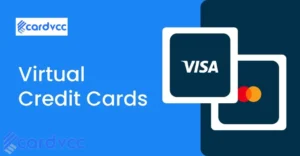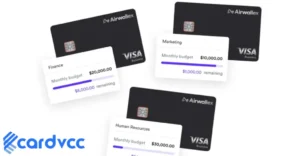Credit cards do not all use the same interest and finance charges. Rates vary based on the card type and issuer.

Credit cards offer convenience but come with varying interest rates and finance charges. Understanding these differences helps consumers make informed choices. Each credit card issuer sets its rates based on factors like creditworthiness, rewards, and card features. Some cards offer lower rates for those with excellent credit, while others might have higher rates but provide benefits like cash back or travel rewards.
Comparing interest rates, fees, and benefits is crucial for finding the right card. Being aware of these variations can save money and improve financial health. Always read the fine print to avoid unexpected charges.
Introduction To Credit Card Interest
Credit card interest is a cost you pay to borrow money. It’s essential to know how it works. Understanding this can help you manage your finances better.
What Is Credit Card Interest?
Credit card interest is the fee charged by banks. This fee applies when you do not pay your balance in full. It’s calculated based on the Annual Percentage Rate (APR). The APR is the yearly interest rate on your credit card.
Here’s a simple example:
| Balance | APR | Monthly Interest |
|---|---|---|
| $1,000 | 18% | $15 |
If you owe $1,000 and the APR is 18%, you pay $15 monthly.
Importance Of Understanding Interest
Knowing about credit card interest helps you save money. It can guide you in making smart spending choices. Paying your balance in full avoids interest charges.
Here are some tips:
- Pay your balance in full each month.
- Understand your card’s APR.
- Use a low-interest card for large purchases.
Understanding these points can help you avoid debt. It also helps maintain good credit health.
Types Of Credit Card Interest
Understanding the types of credit card interest is crucial. Different credit cards offer various interest rates. This section explains the key types and how they affect your finances.
Fixed Vs. Variable Rates
Credit card interest rates can be fixed or variable. A fixed rate remains constant. It does not change with market conditions. Fixed rates offer stability and predictability.
On the other hand, a variable rate fluctuates. It changes based on market indexes. These rates can increase or decrease over time. Variable rates often start lower but can rise unexpectedly.
Apr And Its Components
The Annual Percentage Rate (APR) represents the yearly cost of borrowing. It includes both interest and fees. APR helps you compare different credit cards.
There are multiple components of APR:
- Purchase APR: Applied to new purchases.
- Balance Transfer APR: Applied to transferred balances.
- Cash Advance APR: Applied to cash withdrawals.
- Penalty APR: Applied if you miss payments.
Understanding these components helps in choosing the right credit card. Always compare the APRs to get the best deal.
Finance Charges Explained
Finance charges are fees you pay for borrowing money. These charges include interest and other fees. Understanding these charges helps you manage your credit card better.
How Finance Charges Are Calculated
Finance charges depend on your annual percentage rate (APR). The APR is the yearly interest rate you pay. Your finance charges also depend on your average daily balance. This balance is the average amount you owe each day in a billing cycle.
Here’s a simple example:
| Day | Daily Balance |
|---|---|
| 1 | $500 |
| 2 | $600 |
| 3 | $550 |
To get the average daily balance, sum the daily balances and divide by the number of days. Then, apply the APR to this average balance to get your finance charge.
Factors Influencing Finance Charges
- Interest Rate: Higher interest rates mean higher finance charges.
- Average Daily Balance: Higher balances increase finance charges.
- Billing Cycle Length: More days in the cycle can raise charges.
- Late Fees: Late payments can add extra charges.
Impact Of Interest Rates On Debt
Interest rates have a significant impact on credit card debt. High rates can quickly increase your debt. Understanding how interest rates affect your balance is crucial. This can help you manage your finances better.
Compounding Interest
Compounding interest means you pay interest on interest. This makes your debt grow faster. For example, if you owe $1,000 and have a 20% annual interest rate, you don’t just pay 20% on the original $1,000. Instead, you pay interest on the growing balance.
Here’s a simple table showing how compounding interest works:
| Month | Balance | Interest (20%) | New Balance |
|---|---|---|---|
| 1 | $1,000 | $16.67 | $1,016.67 |
| 2 | $1,016.67 | $16.94 | $1,033.61 |
As you can see, the interest adds up quickly. This can lead to a cycle of debt.
Minimum Payments And Interest
Paying only the minimum payment can also increase your debt. Minimum payments often cover just the interest, not the principal amount. This means your debt doesn’t decrease significantly.
- High interest rates: Make it harder to pay off debt.
- Longer repayment time: Increases the total amount you pay.
- More interest charges: This can lead to more debt.
Let’s look at an example:
- You owe $1,000 with a 20% interest rate.
- Your minimum payment is $20.
- Most of that $20 goes towards interest.
- Your balance doesn’t decrease much.
In the end, you pay more in interest and take longer to pay off the debt. It’s essential to pay more than the minimum to reduce your balance faster.
Common Misconceptions
Many people believe all credit cards have the same interest rates and fees. This is not true. Different cards offer different terms. Understanding these differences can save you money.
Uniform Interest Rates
Not all credit cards have the same interest rates. Some cards offer lower rates for new customers. Others charge higher rates for cash advances. Compare rates before choosing a card.
| Card Type | Interest Rate |
|---|---|
| Standard Card | 15% |
| Cash Back Card | 18% |
| Reward Card | 20% |
| Student Card | 12% |
Hidden Fees And Charges
Credit cards may have hidden fees. Some common fees include:
- Annual fees
- Late payment fees
- Balance transfer fees
- Foreign transaction fees
These fees add up quickly. Read the card’s terms carefully. Look for cards with fewer fees. Some cards waive fees for the first year.
Understand your card’s interest and fees. Make smart financial decisions. Save money and avoid debt.

Can virtual credit cards prevent phishing scams?
Phishing scams are a big problem in today’s digital world. Cybercriminals use these scams to steal personal information. They often target credit card details. But can virtual credit cards help in preventing these scams?
Understanding Phishing Scams
Phishing scams trick people into giving away their personal information. Scammers use fake emails, websites, or messages. They pretend to be trusted companies. The goal is to steal credit card information, passwords, or other personal data.
What Are Virtual Credit Cards?
Virtual credit cards are digital versions of physical credit cards. They have a unique card number, expiration date, and security code. These details are different from your actual credit card. You can use virtual credit cards for online shopping and payments.
How Virtual Credit Cards Work
Virtual credit cards work just like regular credit cards. When you make a purchase, you enter the virtual card details. The payment goes through, but your real credit card information stays safe. This adds an extra layer of security.
Benefits of Using Virtual Credit Cards
- Enhanced Security: Your real credit card information is never exposed.
- Control: You can set spending limits on virtual cards.
- Flexibility: Virtual cards can be used for one-time or recurring payments.
- Easy to Create: You can instantly create virtual credit cards online.
Why Digital Credit Cards Make Sense
Digital credit cards offer many advantages. They provide better security for online transactions. They are easy to manage and control. You can create them instantly and use them as needed.
Preventing Phishing Scams with Virtual Credit Cards
Virtual credit cards can help prevent phishing scams in several ways:
| Method | Explanation |
|---|---|
| Unique Card Numbers | Each virtual card has a unique number, making it hard for scammers to use. |
| Limited Use | Virtual cards can be set for one-time use, preventing reuse by scammers. |
| Spending Limits | You can set spending limits, reducing the risk of large unauthorized charges. |
| Easy Cancellation | Virtual cards can be canceled quickly if compromised, protecting your real card. |
Join Cardvcc & Instantly Create Virtual Credit Cards
Cardvcc offers a simple and secure way to create virtual credit cards. By joining Cardvcc, you can instantly generate virtual cards for your online transactions. This helps in safeguarding your real credit card information.
Strategies To Minimize Interest
Credit cards often come with high interest rates and finance charges. These costs can add up quickly. It’s important to use smart strategies to minimize interest. Below are effective methods to keep your interest charges low.
Paying Off Balances
Paying off your credit card balance each month is essential. It helps avoid interest charges. Always aim to pay more than the minimum payment. The minimum payment covers only a small portion of the balance. This means interest will accumulate on the remaining amount.
Here’s a quick example:
| Balance | Minimum Payment | Interest Rate |
|---|---|---|
| $1,000 | $25 | 18% |
Paying only $25 will not reduce the balance significantly. Interest will keep adding up. To avoid this, try to pay the full balance every month.
Utilizing Introductory Offers
Many credit cards offer 0% interest for an introductory period. This can be a great opportunity to save on interest. Make sure to understand the terms of the offer.
Common features of introductory offers:
- 0% interest for 6-18 months
- Balance transfer options
- Purchase offers
To take advantage of these offers, transfer your existing balance to a new card. Pay off the balance within the introductory period. This will help you avoid interest charges.
Keep an eye on the end date of the introductory period. After this period, standard interest rates will apply. Be prepared to pay off the balance or transfer it again.
Using these strategies can help you minimize interest on your credit cards. Stay aware of your balances and make smart financial decisions.
Comparing Credit Card Offers
Choosing the right credit card can be tricky. Each card has its terms and conditions. You need to compare offers carefully. This helps you find the best deal for your needs.
Reading The Fine Print
Always read the fine print before signing up for a credit card. This is where you find the important details. Look for hidden fees. Understand the terms and conditions fully.
Check the annual fee, late payment fees, and other charges. These can add up quickly. Make sure you know what you are signing up for.
Evaluating April and Fees
The Annual Percentage Rate (APR) is crucial. It shows how much interest you will pay. Different cards have different APRs. Some cards offer low introductory rates. These rates can increase after a few months.
Compare the APRs of different cards. Look for a card with a low APR. This will save you money in the long run.
Here is a simple comparison table for different cards:
| Card Name | Annual Fee | Introductory APR | Regular APR |
|---|---|---|---|
| Card A | $0 | 0% for 12 months | 15.99% |
| Card B | $95 | 0% for 18 months | 18.99% |
| Card C | $50 | 0% for 6 months | 14.99% |
Look at other fees too. Some cards have balance transfer fees. Others charge for foreign transactions. Choose a card with the lowest costs for your needs.
Use this information to make an informed choice. This helps you avoid unnecessary costs.
Regulations And Consumer Protection
Credit card interest rates and finance charges are subject to regulations. These rules protect consumers from unfair practices. Understanding these protections helps cardholders make informed decisions.
Laws Governing Interest Rates
Various laws govern credit card interest rates. The Truth in Lending Act (TILA) is one such law. It requires lenders to disclose terms. This includes the Annual Percentage Rate (APR).
The Credit Card Accountability Responsibility and Disclosure (CARD) Act also plays a role. It limits sudden interest rate hikes. It requires 45 days’ notice before any rate increase.
The Federal Reserve regulates interest rates too. They ensure rates are fair and just. This helps keep the financial system stable.
Resources For Cardholders
Cardholders have access to many resources. These resources provide information and assistance.
- Consumer Financial Protection Bureau (CFPB): The CFPB offers guidance on credit card use. They also handle complaints and provide educational materials.
- National Foundation for Credit Counseling (NFCC): The NFCC offers credit counseling services. They help consumers manage their credit and debt.
- Federal Trade Commission (FTC): The FTC provides resources on consumer rights. They also offer tips on avoiding credit card fraud.
Cardholders can also contact their card issuer for help. Many issuers have customer service teams ready to assist.
Using these resources helps cardholders stay informed. It also helps them avoid costly mistakes.

Frequently Asked Questions of Credit Cards All Use the Same Interest and Finance Charges
Do All Credit Cards Have The Same Interest Rate?
No, credit card interest rates vary. Rates depend on the card type and the issuer’s policies. Always compare rates before applying.
How Are Credit Card Finance Charges Calculated?
Finance charges are typically calculated based on your card’s interest rate and outstanding balance. Check your statement for details.
Can I Avoid Credit Card Finance Charges?
Yes, you can avoid finance charges by paying your balance in full each month. This prevents interest accrual.
What Is The Average Interest Rate On Credit Cards?
The average interest rate for credit cards is around 15% to 25%. Rates can vary based on creditworthiness and card type.
Conclusion
Understanding credit card interest and finance charges is crucial. Not all cards use the same rates. Compare options wisely. Choose a card that fits your financial needs. Stay informed and avoid unnecessary charges. Smart decisions can lead to better financial health.







